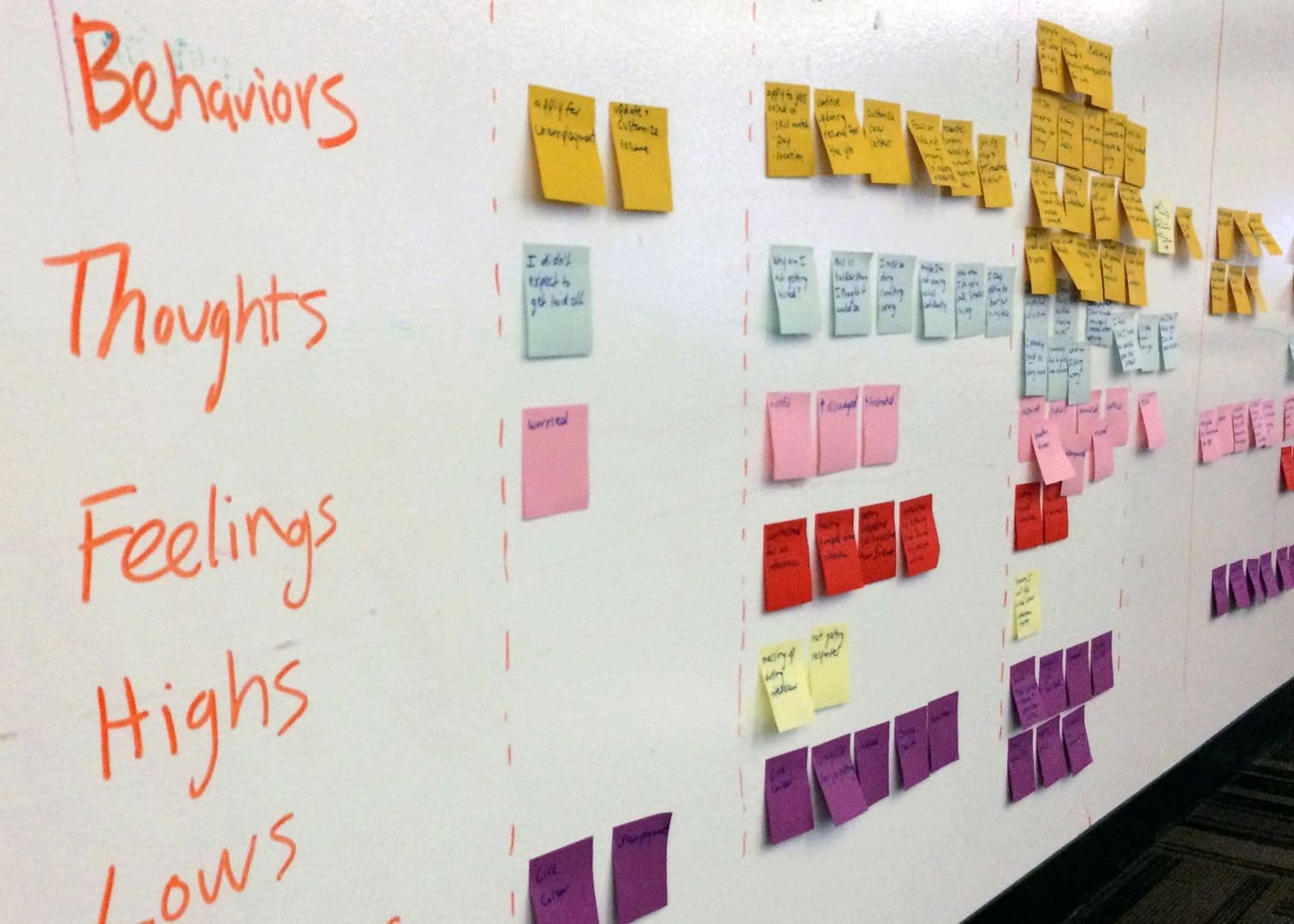
Understanding users is crucial for product success. Personas and journey maps help build empathy, align stakeholders, and guide decisions. A recent study on job seekers used these tools to identify distinct personas, map their experiences, and uncover opportunities for product expansion.
To ensure products are hitting the mark with users, it’s important to understand who your users are and develop a holistic perspective of their experiences. What do users care about? What motivates them? How does the product fit into the larger context of their lives? What are they thinking, feeling, and doing as they strive to achieve a particular goal? How are these needs and behaviors different for different people?
Personas and journey maps can be useful design tools for answering these kinds of questions. Ultimately, these tools serve to get stakeholders on the same page, build empathy for users, and enable product decisions to be grounded in user needs.
For a recent study with an online resume builder, we developed personas and journey maps to capture and illustrate the job seeking experience. Specifically, we sought to understand the behavioral trends of job seekers, highlight pain points in their journey to finding employment, and recommend opportunities for product expansion. To accomplish this, we conducted remote and in-person interviews with 18 job seekers across the nation.
Personas.
After collecting the data, we identified 11 different continua that captured the range of experiences across participants. For example, while some participants were willing to take any job they can get, others were highly selective in their search process. Using different color post-its for each participant, we marked where each participant landed on the various continua, creating a system for visualizing which participants clustered across multiple dimensions. From this process, 4 personas emerged with distinct goals, values, motivations, and behaviors.

Journey Mapping.
To create the journey maps, we started by identifying the stages of the job search process: preparations, applications, job search approach iteration, and job offer. Then, for each persona, we mapped out the actions, thoughts, and feelings (high and lows) that occurred within each of these stages. We quickly jumped into sketching, visualizing what the journey looked like and how it evolved over time. After several iterations, we transitioned from the whiteboard to a digital version. Given that the ultimate project goal was to uncover new product opportunities, we included high-level opportunities on the journey map, which informed a few concepts that we further fleshed out.

As we studied the different personas side by side, we observed a clear trend: once basic needs are met, feeling accomplished and fulfilled can become a priority. Recognizing a fit with Maslow’s hierarchy of needs, we used this theoretical framework as a lens for understanding the job seeker experience.
Two of the personas, Exploring Ellen and Survival Sam, illustrate the extremes on Maslow’s pyramid. While Ellen is motivated by a desire to discover passions and join an inspiring company, Sam is trying to pay the bills and make it through the day. Given these differing needs, it’s important to be clear who we are designing for as we explore new product opportunities. For each concept, who is the primary persona? How can we wow them? And, how can we make accommodations to satisfy the other personas? Here’s a closer look at Sam and Ellen:


With different degrees of urgency, confidence, job selectivity, and stress, Sam and Ellen take different approaches to the job search process. Here’s a snapshot of what their journeys entail:


The personas, and journey maps will help the company build empathy for their users and design targeted solutions. As the personas are socialized and embedded in product ideation sessions, it will help improve communication and ensure that everyone knows who they are designing for.
